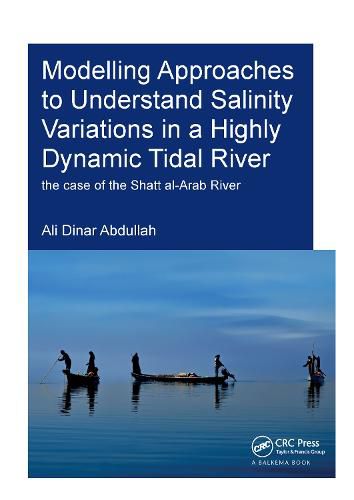Readings Newsletter
Become a Readings Member to make your shopping experience even easier.
Sign in or sign up for free!
You’re not far away from qualifying for FREE standard shipping within Australia
You’ve qualified for FREE standard shipping within Australia
The cart is loading…






This book reports the first systematic monitoring and modelling study on water availability, water quality and seawater intrusion of the Shatt al-Arab River (SAR) on the border of Iraq and Iran, where causes and concentration levels of salinity have not yet been fully understood, let alone addressed, leading to conflicting perceptions of its origin (external or internal), the natural conditions and the practices that can explain the current critical conditions. Current scientific knowledge on the SAR salinity problem is deficient, partially due to the complex and dynamic interaction between marine and terrestrial salinity sources, including return flows by water users of the different water sectors in the Euphrates and Tigris rivers upstream of the SAR.
The development of a new series of monitoring stations and various modelling approaches helped to better understand the interactions between these different sources. The comprehensive and detailed dataset formed the basis for a validated analytical model that can predict the extent of seawater relative to other salinity sources in an estuary, and for a hydrodynamic model that can predict salinity changes. The adaptability of the models to changing conditions makes them directly applicable by water managers. The procedure can be applied to other comparable systems.
$9.00 standard shipping within Australia
FREE standard shipping within Australia for orders over $100.00
Express & International shipping calculated at checkout
This book reports the first systematic monitoring and modelling study on water availability, water quality and seawater intrusion of the Shatt al-Arab River (SAR) on the border of Iraq and Iran, where causes and concentration levels of salinity have not yet been fully understood, let alone addressed, leading to conflicting perceptions of its origin (external or internal), the natural conditions and the practices that can explain the current critical conditions. Current scientific knowledge on the SAR salinity problem is deficient, partially due to the complex and dynamic interaction between marine and terrestrial salinity sources, including return flows by water users of the different water sectors in the Euphrates and Tigris rivers upstream of the SAR.
The development of a new series of monitoring stations and various modelling approaches helped to better understand the interactions between these different sources. The comprehensive and detailed dataset formed the basis for a validated analytical model that can predict the extent of seawater relative to other salinity sources in an estuary, and for a hydrodynamic model that can predict salinity changes. The adaptability of the models to changing conditions makes them directly applicable by water managers. The procedure can be applied to other comparable systems.